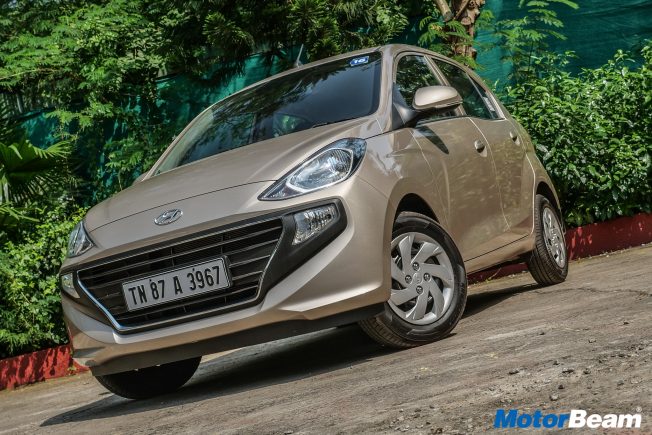We pit the newly launched Hyundai Santro against its current competition.
In the last decade, the Hyundai Santro was a very popular car among the public. Its refined engine, spacious interiors and value for money price tag attributed to its success. However, the market has evolved a lot in 2018. There is a lot of competition from other manufacturers, who are offering similar specs with an equally affordable price tag. With the 2019 Hyundai Santro finally launched, it’s time for a quick competition check, to see who comes out on top.
Design & Looks – The choice of design always comes down to the individual. If you’re a person who prefers peppy looks and smooth edges then you will find the Maruti Celerio attractive. Similarly, if you prefer a sporty design then the Renault Kwid will catch your attention. The new Hyundai Santro has fluidic design elements inspired from other Hyundai cars and it looks more curvy and spacious than before. The Tata Tiago is based on the company’s ‘Impact Design 2.0’ language and features a bold design which intends to make a statement.
Dimensions – The Tata Tiago is the longest car among the competition. It is 3746 mm long with a width of 1647 mm and a height of 1535 mm. Which means that the car is spacious and has enough room for all the passengers. The Hyundai Santro comes in third after the Renault Kwid in terms of length. The Santro features ample headroom because of its 1560 mm height, matched only by the Celerio. The width and length of the Santro are pretty high at 1645 mm and 1560 mm respectively. The Kwid is the shortest among all of them with a height of 1513 mm, due to which taller passengers could feel a bit uncomfortable.
Features – The 2019 Hyundai Santro and Renault Kwid come equipped with a touchscreen infotainment system. The Santro is also equipped with rear AC vents while the power window controls at the front are placed near the gearstick. The Kwid gets a first in segment rear centre arm rest. The Tiago, Kwid and Santro get parking sensors while the Santro and Kwid also get a rearview camera as well. The Tiago and Santro also get OVRM with electronically adjustable mirrors along with safety features like airbags, ABS and EBD. However, Corner Stability Control (CSC) is present only on Tiago. Integrated turn signals and fog lights are common across all these cars.
Engine – The 2019 Hyundai Santro is powered by a 1.1-litre petrol engine which produces 69 PS of power at 5500 RPM and 99 Nm of torque at 4500 RPM. The car has an ARAI certified mileage of 20.3 km/l. It is also available in a CNG version which generates 59 HP at 5500 RPM and 84.3 Nm of torque at 4500 RPM. The Santro is the only car here which uses a 4-cylinder engine.
The Tata Tiago is the only car here to feature a petrol and a diesel engine. Its 1199cc Revotron petrol motor churns out 85 PS of power and 114 Nm of torque. While its 1047cc diesel engine makes about 70 PS of power and 140 Nm of torque. On the other hand, the Celerio and Kwid have only petrol engines. A 998cc petrol motor powers the Celerio and it generates 68 BHP of power and 90 Nm of torque. While the Kwid uses a 1.0-litre petrol engine which produces 68 PS of power and 91 Nm of torque (it also gets an 800cc engine which doesn’t find place in this company).
Verdict – All cars in this comparison are popular in the Indian market and for good reason. The Celerio is a Maruti, the Tata Tiago provides unmatched safety, while the Renault Kwid remains an accessible option for young buyers. The Hyundai Santro also strikes a perfect chord with the young and experienced alike. It carries a famous old name and is loaded with modern features. The recent excitement among the public is more than enough to justify the capabilities of the 2019 Hyundai Santro. It remains a smart and sensible choice while offering a fresh look to please every car enthusiast. However, it’s priced at a premium and thus if you are looking for value for money, it’s still Tata Motors that offers more car per car.

